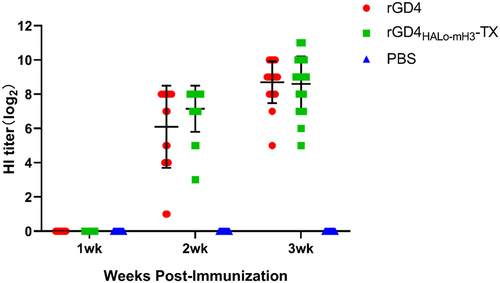Figures & data
Table 1. Primers for construction of the recombination HA gene
Figure 1. Phylogenetic tree of H7N9 strains based on HA gene. The chosen LPAIV and HPAIV strains were confirmed based on their law of basic amino acid motif located at the HA cleavage site. A/Chicken/Guangxi/SD098/2017 strain is the HA gene donor virus of H7-Re2.
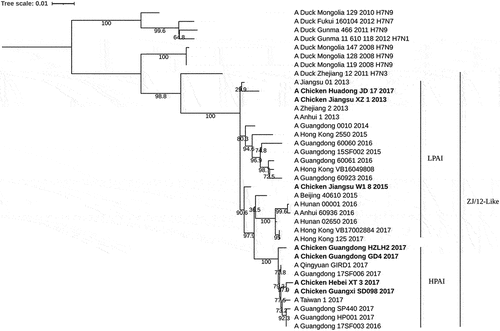
Figure 2. Thermal and pH stability of H7N9 viruses. H7N9 GD4, HZLH2, and XT-3 strains were incubated at 37°C (a) or 42°C (b) for 5 days, or at 56°C (c) for 90 mins. The HA titers were determined. (d) for pH stability, the viruses were incubated in each buffer at 37°C for 10 min, and the HA titers were then determined. The data are presented as the mean ± SD. *P <.05, **P <.01.
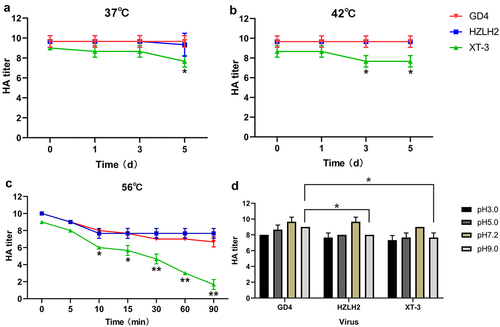
Figure 3. Construction of recombinant virus. (a) the multi-basic amino acid motif located at the HA cleavage site were removed and the HA2 specific peptide (463ADSEMDKLYERVKRQLRENA482) were replaced by H3 subtype 12 peptide (463ADSEMNKLFEKTKKQLRENA482). (b) the recombinant HALo-mH3 and the NA plasmid of GD4, combined with high-yield viral backbone from H9N2 subtype TX strain (containing PB2, PB1, PA, NP, M, and NS plasmids), was used to construct a recombinant virus based on our established reverse genetic manipulation.
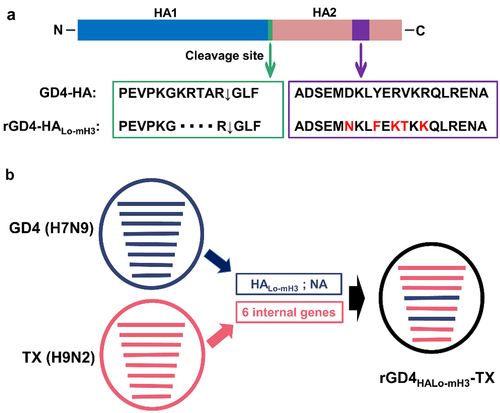
Table 2. The TCID50 and EID50 of H7N9 strains
Table 3. Viral reproductive ability and pathogenicity
Table 4. Survival and shedding of immunized chickens after challenge
Figure 5. Specificity of McAb 3G10 by IFA. (a-p) CEF cells were infected with different AIVs, including GD4, HZLH2, XT-3, JD/17; XZ-1, W1–8, rGd4halo-mH3-TX, H1N1, H3N2, H4N6, H5N2, H5N6, H5N1, H6N2, H9N2, and H10N3 subtype AIVs. q: Negative control. IFA was performed based on 3G10 McAb. Scale bar = 100 μm.
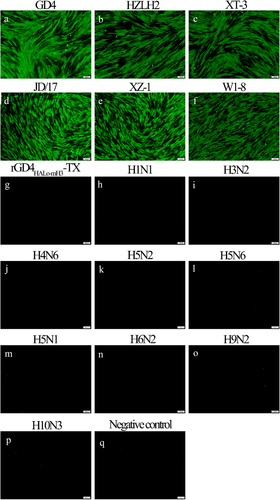
Table 5. The specificity of established competitive inhibition ELISA

